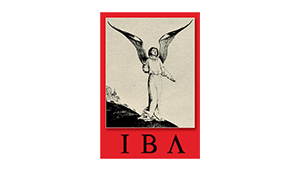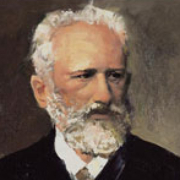From the Naxos Blog: December’s in the ayre.
December 03, 2021Although city centres and shopping complexes have for some weeks been ringing with the sound of musical Christmas jollies, this blog presents the reverse side of the coin, with a small selection of works that reflect a less traditional side of the month of December.
I’m going to start with what is undoubtedly one of American composer Charles Ives’ most forceful and demonstrative songs. Written in 1913, December is a setting of words by the 14th-century Italian poet Folgore da San Gimignano in a translation by Dante Gabriel Rosetti (1828–1882), the English poet, illustrator, painter, and translator. The song is designed to be sung “roughly and in a half-spoken way”, so giving this tale of ‘seasonal ill-will’ an appropriate harshness and astringency that never wavers. Here are the words:
Last, for December, houses on the plain,
Ground-floors to live in, logs heaped mountain-high,
And carpets stretched, and newest games to try,
And torches lit, and gifts from man to man
(Your host, a drunkard and a Catalan);
And whole dead pigs, and cunning cooks to ply
Each throat with tit-bits that shall satisfy;
And wine-butts of Saint Galganus’ brave span.
And be your coats well-lined and tightly bound,
And wrap yourselves in cloaks of strength and weight,
With gallant hoods to put your faces through.
And make your game of abject vagabond
Abandoned miserable reprobate
Misers; don’t let them have a chance with you.
Fernando Lopes-Graça (1906–1994) was one of the most prolific Portuguese composers of the twentieth century, his works encompassing a wide range of genres. The most significant aspect of his musical style is his use of Portuguese folk music as a medium to forge his personal style, very much in the way that Béla Bartók did with Hungarian folk tunes. In his orchestral work December Poem, however, there’s not a trace of this usual hallmark. Written in 1961, the 10-minute work is sombre throughout, making it probably Lopes-Graça’s most expressive and emotional work. Here’s the first half of the piece.
Two contrasting piano pieces now, the first a carefree miniature by Tchaikovsky from his The Seasons, one of twelve pieces written in response to a commission from Nikolay Bernard, editor of the periodical Nouvelliste. Each monthly issue was to contain an appropriate piece by Tchaikovsky, who had instructed his servant to remind him when each piece was due, an indication of a certain reluctance towards the commission on his part. Whatever Tchaikovsky’s attitude may have been towards a bread-and-butter project, the work has much charm, as you can hear in the final movement, December: Christmas.
The context of the next piece was entirely different. I’m referring to the piano suite Sun and Clouds by the Finnish composer Selim Palmgren (1878–1951). Palmgren’s success in Europe reached its peak just before the outbreak of the First World War with several performances of his piano concertos in European capitals. That success, interrupted by the war, resulted in an invitation to move to the United States in 1921. After returning to Finland in 1927, Palmgren’s life became more modest, isolated and financially unstable.
Written in 1942, Sun and Clouds was Palmgren’s final large-scale piece for piano; each descriptive movement is dedicated to a month of the year. He had always written such music with relative ease, but after 1928 he would publish only five more piano works. One of the most significant reasons for this creative break had been the sudden and devastating death of his wife during a pre-concert rehearsal of a cantata which he himself had written. Palmgren made the following confession about this period in his memoirs in 1948: “I was not able to concentrate my imagination nor my strengths on any large-scale work. I felt myself, directly speaking, like a lemon that had been squeezed to its last drop…”
The general mood of Sun and Clouds is filled with optimism, despite having been written during the most dramatic times of the Second World War. No doubt Palmgren had in mind Tchaikovsky’s popular piano suite The Seasons and created an adaptation based on his own style and personality. But there’s no mistaking the uncertain melancholy that underpins the final short movement Peace on Earth, December.
We finish in a more radiant frame of mind with a song by John Joubert (1927–2019), the British composer who was born in South Africa. It’s titled December Night and forms part of Joubert’s song cycle The Instant Moment, written in 1987. I’ll let the composer introduce the work:
“The five poems which constitute the text of this cycle are all taken from the collection Look! We Have Come Through!, published by D.H. Lawrence in 1917. They are mainly concerned with the development of Lawrence’s deepening relationship with Frieda, the wife of Professor Ernest Weekley of Nottingham University. Lawrence and Frieda had eloped in 1912 and for a time were to live a nomadic life together, mainly on the continent, until their marriage in 1914. Look! We Have Come Through! was written during this period. I have selected the poems in order to express in musical terms five highly contrasted reactions to the experience of love.
December Night is an invitation to love, with more than a passing nod to Tristan and Isolde in the rising chromatic phrases of the opening. The mood becomes more impassioned to conclude the song ecstatically. The strings are muted throughout, however, to suggest the enclosed warmth of a fire-lit room in winter.”
Here are the words:
Take off your cloak and your hat
And your shoes, and draw up at my hearth
Where never woman sat.
I have made the fire up bright;
Let us leave the rest in the dark
And sit by firelight. The wine is warm in the hearth;
The flickers come and go.
I will warm your limbs with kisses
Until they glow.



































